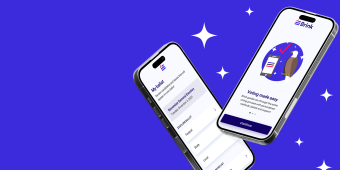Being an organization that’s truly devoted to equity means bringing accessibility testing tools into every part of our process. It’s not a box to check — making our products accessible makes them better, and we have a responsibility to make sure what we build works well for everyone.
Still, accessibility isn’t static. Much like our commitment to anti-racism, our work with accessibility involves ongoing work and an evolving process. It’s also not work we get to grade. Ultimately, it’s the audience who determines whether our software is accessible, as we’ve written about before.
Thankfully as our understanding of what audiences need grows, so do the tools to help us meet them. We surveyed some of our team to share their go-to tools for making products user-friendly for the widest audience.
Our go-to accessibility testing tools
Dyslexia style guide — This guide is incredibly specific and useful. From fonts to background colors and spacings — this gives you all the simple things to keep track of when making sure your site is easier for dyslexic users to read.
Color Contrast Checker — Our go-to color contrast check. You can input any two color hex codes and adjust the hues, saturation and lightness to see how well they all work together. This can make sure your colors’ contrast meet the Web Content Accessibility Guidelines (WCAG).
Accessibility design dos & don’ts — This Gov.uk poster resource is great for easily identifying how to make things accessible across six different disabilities: low vision, Deaf and hard of hearing, dyslexia, motor disabilities, Autistic users, and screen reader users. It’s not as in-depth as the WCAG mentioned above, but it is an easy visual representation to keep basic tenets of accessible design top-of-mind.
W3 Web accessibility tutorials — These are great resources for everyone involved in the process from the designer, client, project manager and content creator to maintain accessibility requirements. One of our favorites is a decision tree that guides designers and developers to the best alt attribute use.
The AXE accessibility Chrome extension from Deque — This tool will test your web application for accessibility directly in browser. Great for testing updates and confirming things are working as they should well after launch.
Patternomaly — This tool makes it easier to design charts that are accessible for people with color blindness by building random patterns to go along with different colors in a chart or table.
Accessibility Inspector — This tool allows you to identify parts of your app that may not be accessible, then gives you suggestions on how to fix the issues. It’s a standard part of our iOS testing procedure.
Beta testing — Even with all of our favorite tools, testing it yourself, with your team and with your audience can still catch things you missed the first time. No automated tool will beat navigating a product using your screenreader for catching those accessibility issues that evaded initial testing.
Accessible software development isn’t a bonus, but a baseline
No one questions whether a new product needs Q&A testing to work out the bugs. Accessibility testing is just that, another way to work out the bugs in how someone will use what you’ve made. If you left lorem ipsum in place of a paragraph, you’d fix it. So if your color choices make text impossible to read for people with low vision, you need to fix that too.
These accessibility tools are great to employ during design and development to think about how you can build something for people with disabilities. None of them, however, can serve as a stand-in for actually talking with and testing with the users you are trying to make it accessible for.
We’re always on the lookout for new tools. Are there ones you are excited about? Let us know!




